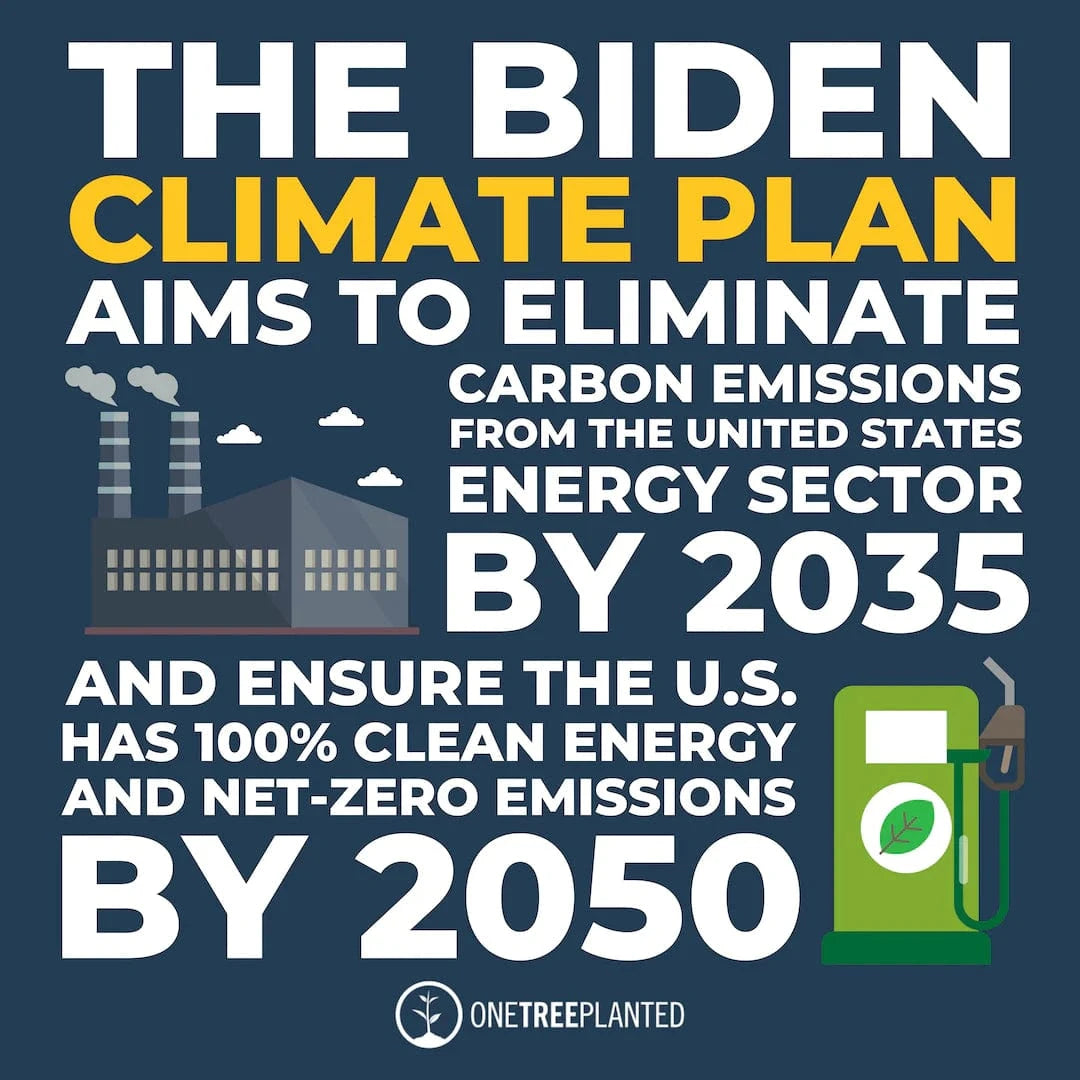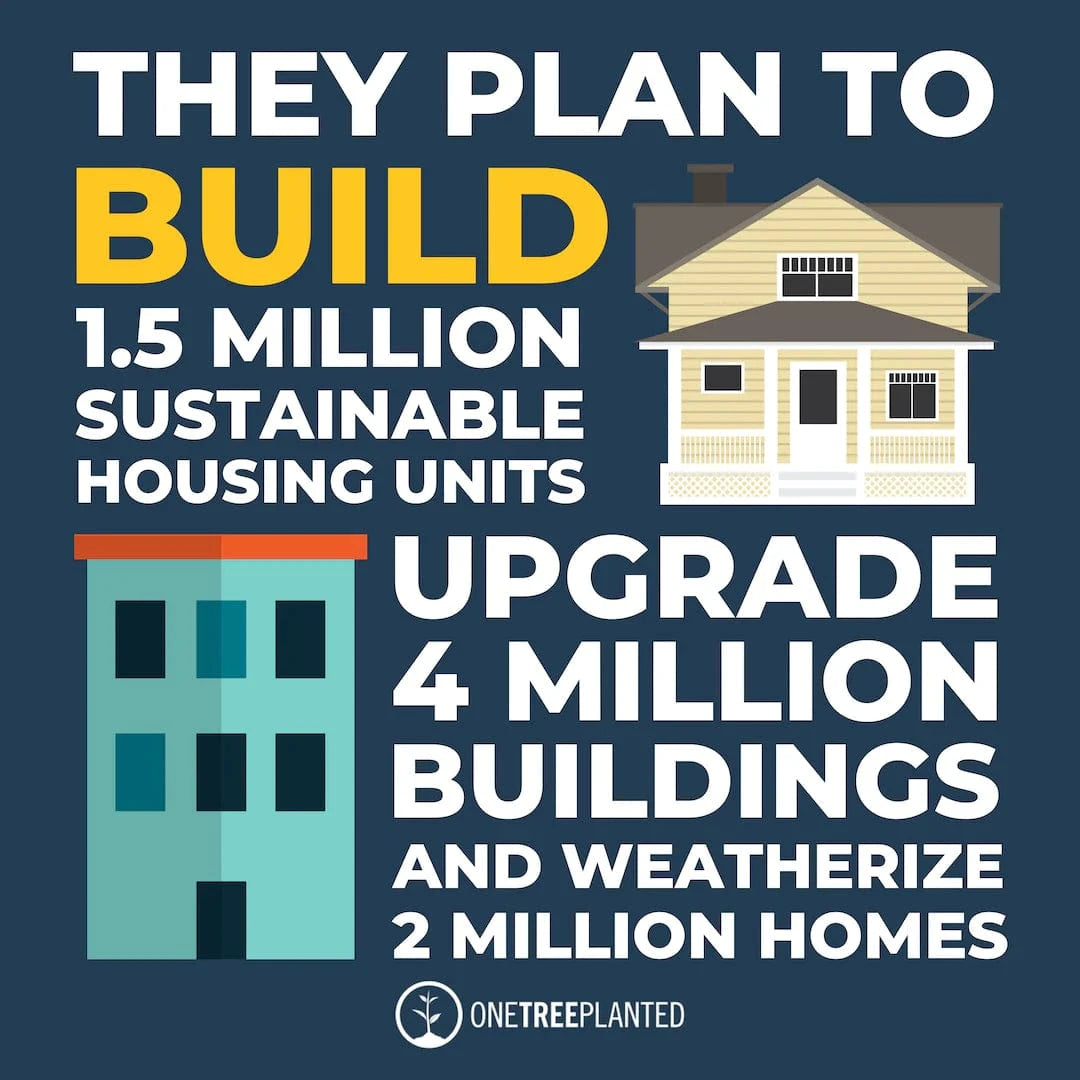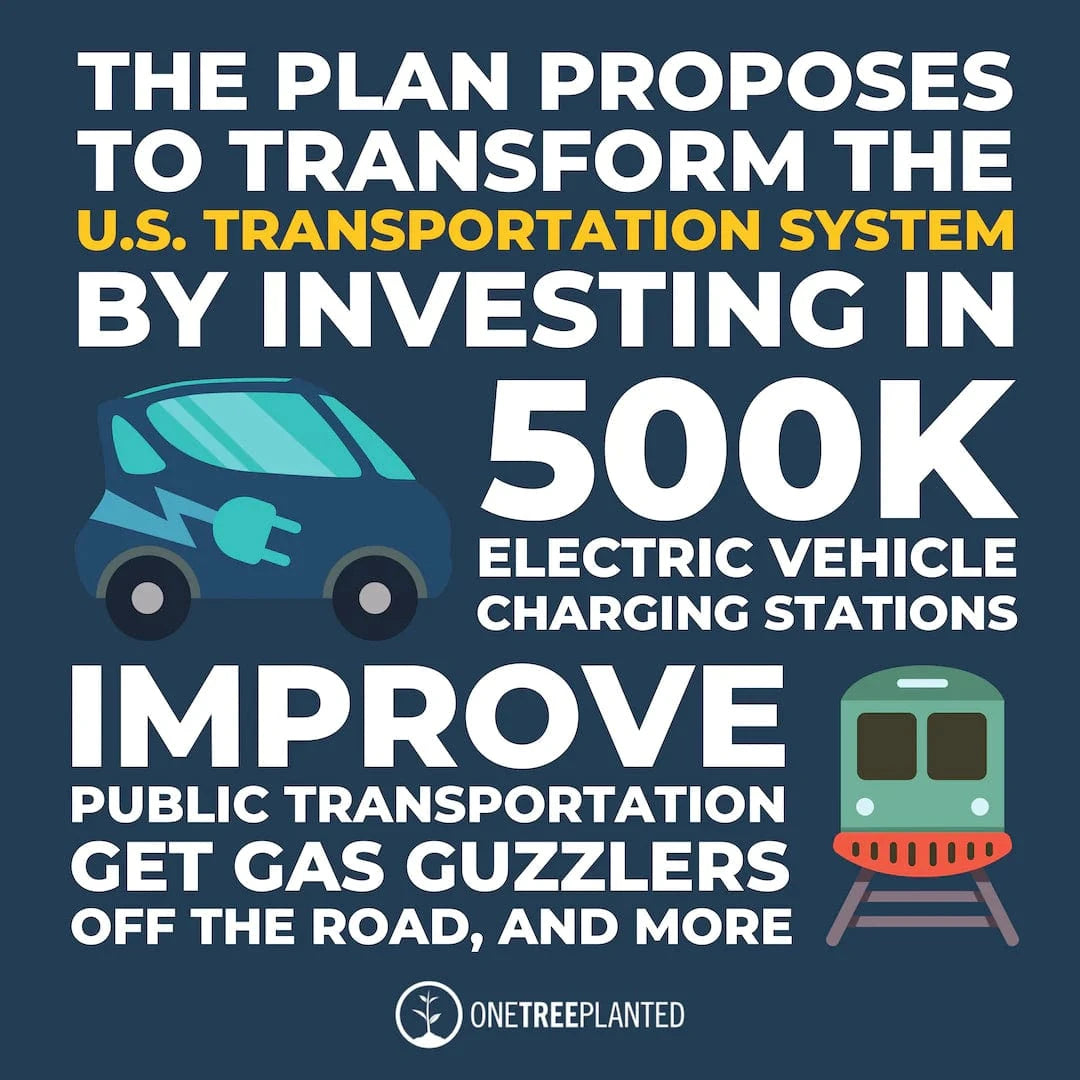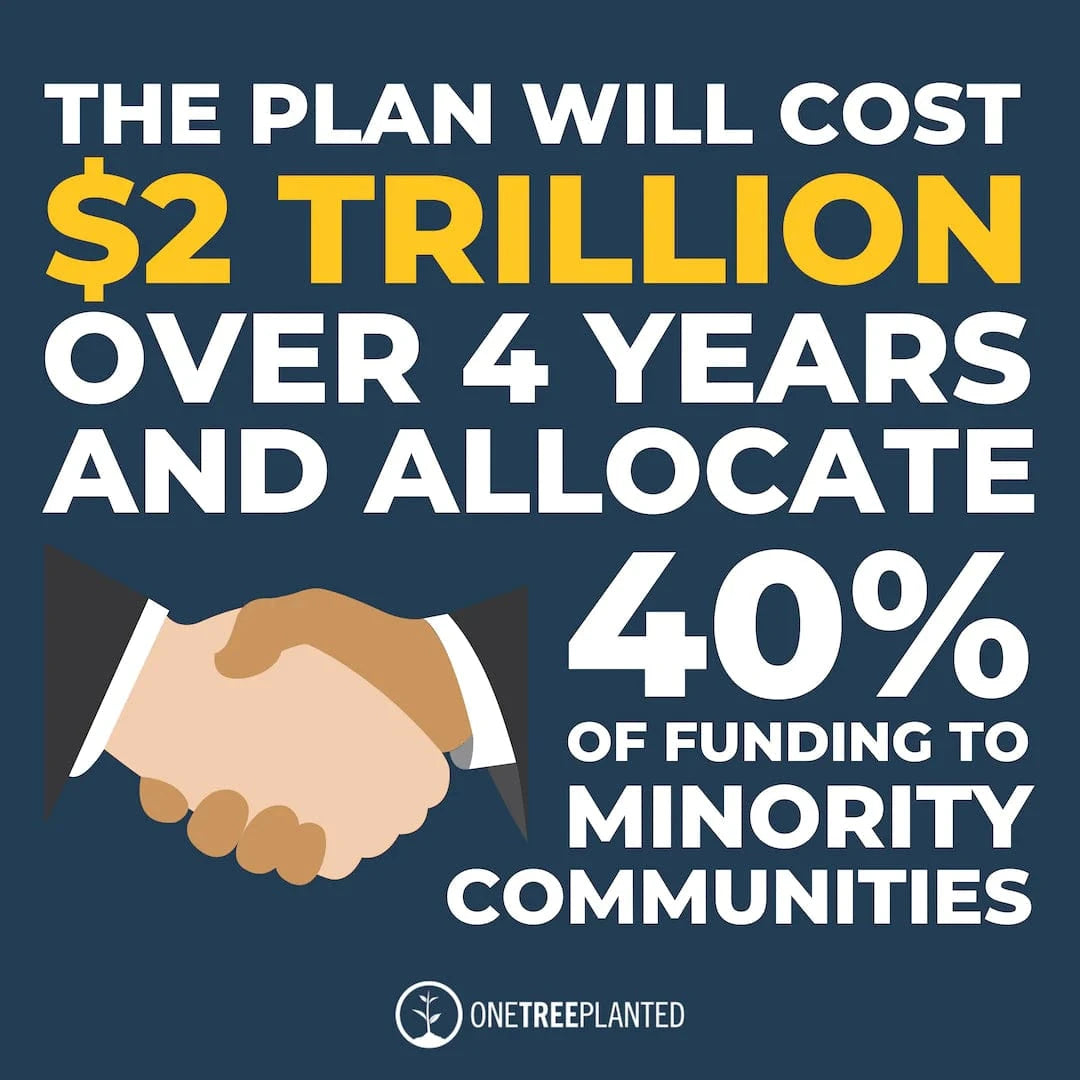9 Ways Biden's Climate Plan and the Green New Deal are Similar, and Where They Differ

Get news, updates, & event Info delivered right to your inbox:
How the Green New Deal Informed the Joe Biden Climate Plan
For those of us in the environmental space, January 20th marked a long-awaited shift away from denial and obstruction to renewed hope and leadership on climate change. At around 12:00 PM EST, Joseph R. Biden was sworn in as the 46th President of the United States and immediately signed 17 executive orders, most notably to rejoin the Paris Climate Accord, halt drilling in the Arctic National Wildlife Refuge, terminate permits for the Keystone XL pipeline, and restore protections for national monuments. He also told federal agencies to begin reviewing and reinstating over 125 environmental regulations that were rolled back by the previous administration — and we're here for it!
These swift, decisive orders mark long-awaited victory for environmental activists and signal nothing less than a sea change in American leadership on the environment. But while Wednesday gave us much reason to celebrate, there’s a long and challenging road ahead. Analysts warn that President Biden’s actions must be followed up by a slew of powerful domestic climate policies that drastically lower our emissions — particularly from automobiles, heavy industry, power plants, and oil and gas wells.
The Joe Biden climate plan, crafted by the Biden-Sanders Unity Task Force (a committee that included climate and environmental justice activists who helped to design the Green New Deal), is an aggressive plan that aims to, among many other things, “combat climate change in a way we have not before.” But how does it measure up to the extremely ambitious Green New Deal— which was inspired by Franklin D. Roosevelt’s New Deal and seeks to fight the climate crisis and tackle inequality at the same time?

The Joe Biden Climate Change Plan + the Green New Deal: Here’s How They Compare
To begin, it’s not entirely accurate to judge the two as equals; one (the Green New Deal), is a broad and non-binding resolution that would likely cost $10 trillion+ dollars over 10 years, while the other (the Biden climate plan), is a narrowly-focused series of actions that will cost around $2 trillion dollars over a 4-year presidential term.
$2 trillion still sounds like a lot, but to put that into context, the United States has spent $2.2 trillion on coronavirus stimulus measures already. Further, the Biden climate plan will be paid for by reversing the previous administration's hefty corporate tax cuts, reducing incentives for tax evasion, ending fossil fuel subsidies, + closing loopholes in our tax code that benefit only the wealthiest Americans.
Despite its lower cost and narrower focus, the Biden plan acknowledges that the Green New Deal provides a crucial framework for dealing with climate change and encapsulates two core truths: to meet this challenge requires action on an epic scale + our environment and economy are inextricably intertwined. As such, many — although not all — of the tenets set by the Green New Deal will be addressed within the Joe Biden Climate Plan.
Despite their differences, both plans are, at their core, about jobs and the environment and aim to balance aggressive climate change mitigation with related issues like environmental justice, sustainable housing, providing a “just transition” for affected workers, and undertaking major infrastructure improvements, like high speed rail (not a surprise when you consider Biden’s decades-long patronage of the Amtrak train line from Wilmington, DE to Washington, DC!)

1. Green Jobs
Biden’s plan intends to marry coronavirus economic recovery with massive clean energy investments and infrastructure improvements that will create over 10 million new jobs. Both plans emphasize labor unions’ right to organize and bargain for fair wages, but the Green New Deal goes further with its goal to guarantee a family-sustaining job and benefits to all Americans. Biden’s plan pledges to create those millions of jobs by retooling the auto industry for low-emission vehicles, building green infrastructure, improving the energy efficiency of millions of buildings, conducting massive cleanups of pollution from oil and gas wells and coal mining sites, and more.
2. Infrastructure
Climate change is steadily dialing up the pressure on America’s aging infrastructure, and both plans call for major investments to meet that challenge. Biden’s plan aims to make "smart infrastructure investments to rebuild the nation and to ensure that our buildings, water, transportation, and energy infrastructure can withstand the impacts of climate change." The Green New Deal takes a broader approach, including building or upgrading to "smart" power grids, completely overhauling our infrastructure, restoring forests to remove greenhouse gases from the atmosphere, and more.

3. Housing
Both address the connection between housing insecurity and the climate crisis. However, while the Green New Deal calls for "providing all people of the United States with affordable, safe, and adequate housing,” Biden's plan falls far short of that. Still, it draws the connection between unaffordable housing in job centers and high emissions due to increased traffic and long commutes. To combat this, he wants to build 1.5 million sustainable homes and housing units, upgrade 4 million buildings, and weatherize 2 million homes over the next 4 years.
4. Emissions
Biden’s plan aims to clean up the U.S. power sector’s dirty carbon footprint by 2035 and bring our economy down to net-zero emissions by 2050. In contrast, the Green New Deal is far more aggressive, calling for a 10-year national mobilization that generates "100 percent of the power demand in the United States through clean, renewable, and zero-emission energy sources.”

5. Transportation
Both plans aim to overhaul America’s transportation industry by building an accessible public transportation network and pushing widespread adoption of hybrid and electric vehicles. Biden’s plan proposes creating a new “cash for clunkers” style program to get gas guzzling cars off the road, incentivizing auto companies to build more zero-emission vehicles with rigorous fuel economy standards, investing in 500,000 EV charging stations across the country, and more. This alone would create millions of green jobs!
6. Fracking
The Green New Deal doesn’t explicitly mention hydrofracking, but its elimination is implied within the timeline set to cut emissions from the power sector. In contrast, Biden told Pennsylvania voters in July that fracking “is not on the chopping block.” As a swing state (along with Ohio and Texas) with 32,000 workers employed in the fracking and natural gas industries, this may have been necessary to win the election, but it disappointed climate activists. However, his campaign did clarify that he doesn't support any new fracking operations on federal land.

7. Environmental Justice
Both plans emphasize addressing environmental injustice to help remedy the inequities that expose minority, low-income, and Indigenous communities to a disproportionate amount of pollution and climate change effects. Biden’s plan specifically will direct 40% of its funding to these communities and calls for the establishment of an Environmental and Climate Justice Division within the Justice Department, for the express purpose of prosecuting anti-pollution cases.
8. International Climate Policy
With the U.S. accounting for 15% of global carbon emissions, both plans recognize that nothing happens in a vacuum and international collaboration is essential to address the climate change crisis. Biden already initiated the process to rejoin the Paris Agreement, but also promised to “use every tool of American foreign policy to push the rest of the world to raise their ambitions alongside the United States.” The GND laid out a similar goal, “with the aim of making the United States the international leader on climate action, and to help other countries achieve a Green New Deal.”
9. Climate Change Resilience
In addition to rebuilding our infrastructure, Biden's plan aims to boost national resilience and security by developing regional climate resilience plans in partnership with local universities and national labs, and providing local access to the latest science, data, tools, and training. The Green New Deal takes a broader view of finding ways to pay for the resilience plans communities develop to prepare for worsening disasters, and repairing and upgrading our infrastructure to withstand future climate impacts.
The Verdict?
Imperfect though the Biden plan may be, it’s still the most progressive in U.S. history and takes important steps towards building a more sustainable future. We have a long way to go and a lot of catching up to do, but it feels like we're headed in the right direction and it's refreshing to see that climate change is being taken seriously again by the U.S. government.
Want to join us as we rebuild our "natural infrastructure" by restoring forests from coast to coast? Support reforestation in areas like the United States!
Get news, updates, & event Info delivered right to your inbox:
Related Posts
The 9 Oldest, Tallest, and Biggest Trees in the World
11/12/2025 by One Tree Planted
Winter and Trees: How Do Trees Survive Winter?
09/12/2025 by One Tree Planted
Why Trees Are Great Holiday Gifts
04/12/2025 by Meaghan Weeden
Popular On One Tree Planted
The 9 Oldest, Tallest, and Biggest Trees in the World
11/12/2025 by One Tree Planted
What Causes Deforestation?
10/07/2025 by Meaghan Weeden
8 Amazing Bamboo Facts
14/01/2025 by Meaghan Weeden
Fundraising Disclosures

Be Part of the
Restoration Movement
The Grove is more than just a monthly giving program: it's a vibrant community of individuals who are dedicated to reforestation and environmental restoration on a global scale.
As a member of The Grove, you affirm your commitment to restoring forests, nurturing biodiversity, and fostering positive global change.




